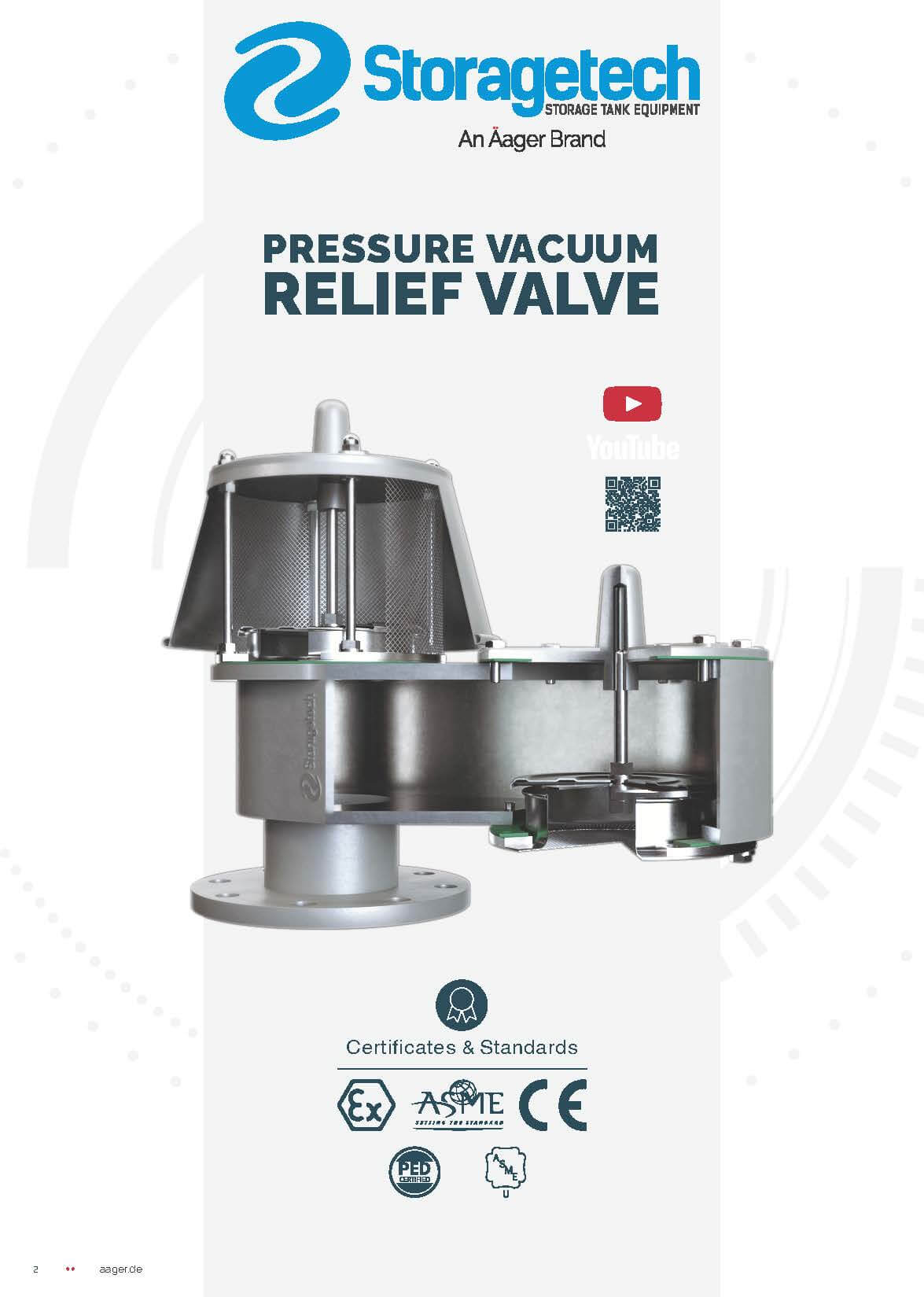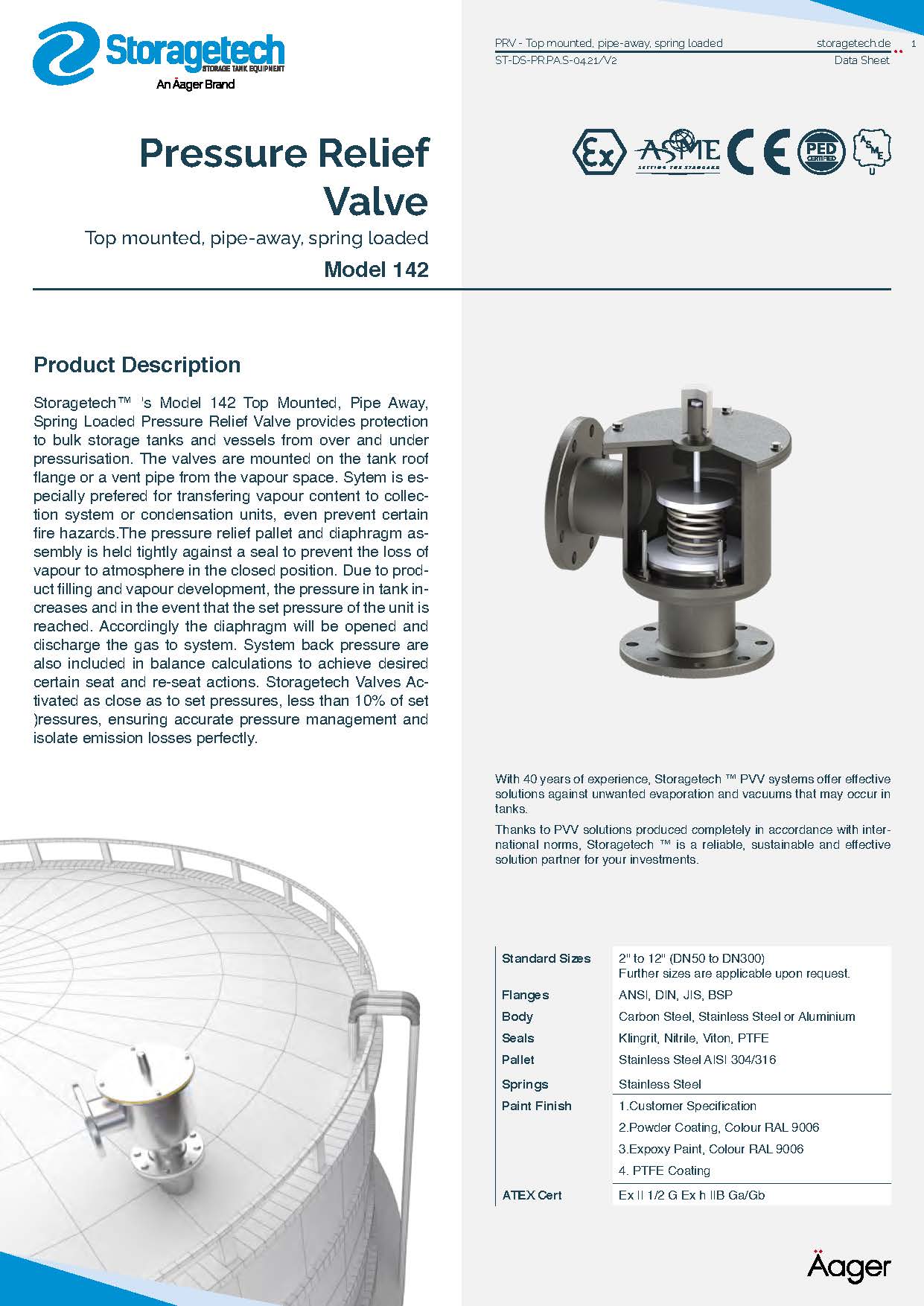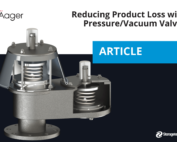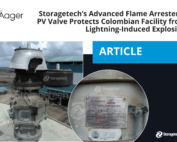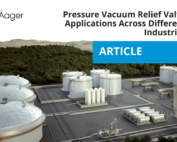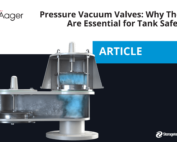Model No: 142
Designed for installation on bulk storage tanks, Storagetech’s Model 142 Pressure Relief Valve is designed to protect the tank from excessive internal pressure.
In the closed position the pressure relief pallet and diaphragm assembly are held tightly against a seal to prevent the loss of vapour to the atmosphere. As the internal pressure in the tank increases, due to product filling and vapour development, and if the set pressure of the unit is reached, the diaphragm will open and discharge the gas to the atmosphere. The opening set-point is selectable from a range between +61 mbar and +1000 mbar (+24 inch W.C. and 400 inch W.C.), and the valve will close when the tank returns to a safe pressure.
Several features are inherent in the valve design to ensure a smooth, positive and effective operation. The body is self-draining and drip rings prevent condensate from settling on seating surfaces. A diaphragm and seal manufactured from Teflon reduce the possibility of ice formation and sticky residues hindering the valve from opening, while the pallet assembly moves freely on guide posts.
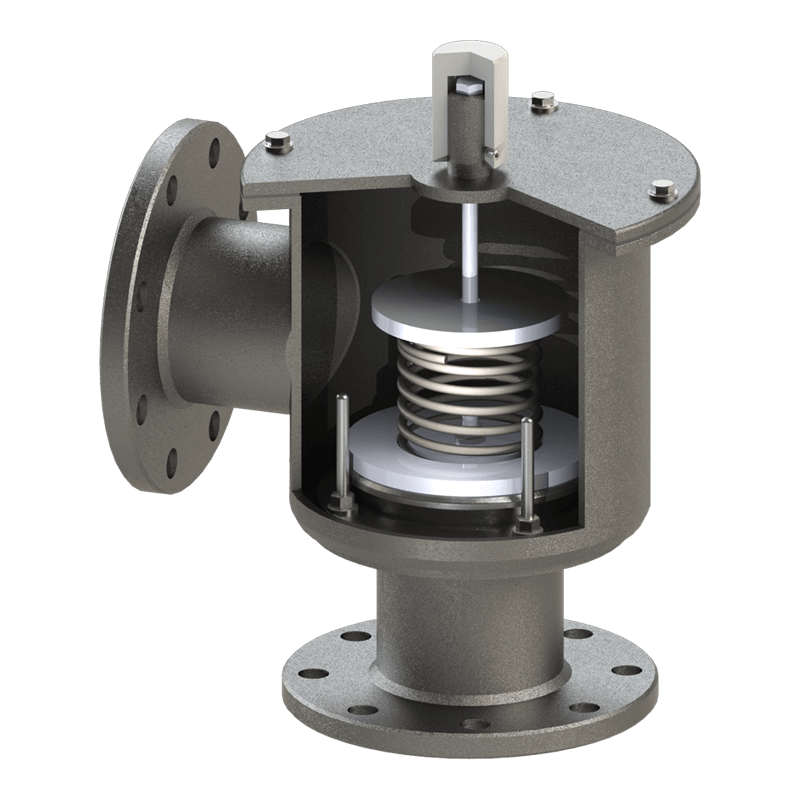

| Pressure | Spring-loaded +61 mbar and +1000 mbar (+24 inch W.C. and +400 inch W.C.) |
| Ambient temp | -20°C to +60°C |
| Standard sizes | 2” to 12” 50 to 300mm |
| Flanges | API Class 150 RF, DIN PN16 |
| Body | Carbon steel, stainless steel, or aluminium |
| Seals | Nitrile, Teflon, and Klingrit |
| Pallet | Stainless steel AISI 304 |
| Springs | Stainless steel |
| Paint finish | 1-) Powder Coating, Colour RAL 9006 2-) Epoxy Paint, Colour RAL 9006 3-) Customer Specification |
| ATEX cert | Ex II 1/2 G c IIB |
The integrity of the seal is tested for leakage in accordance with API Standard 2521 – Use of Pressure-Vacuum Vent Valves for Atmospheric Loss.
The size of the vent should be calculated in accordance with API Standard 2000 (ISO 28300) – Venting Atmospheric and Low-Pressure Storage Tanks or other international standards.
Data sheet, Pressure Relief, Vacuum Relief, and Pressure-Vacuum Relief Valves
Deflagration vs Detonation
Learn the key differences between deflagration and detonation.
Combustion Process
Explore the science behind combustion and its applications.
Explosion Groups
Discover the different types of explosions and our products.
Request a Quote
Do you need a quick quotation? Fill out the below form and expect our reply soon


